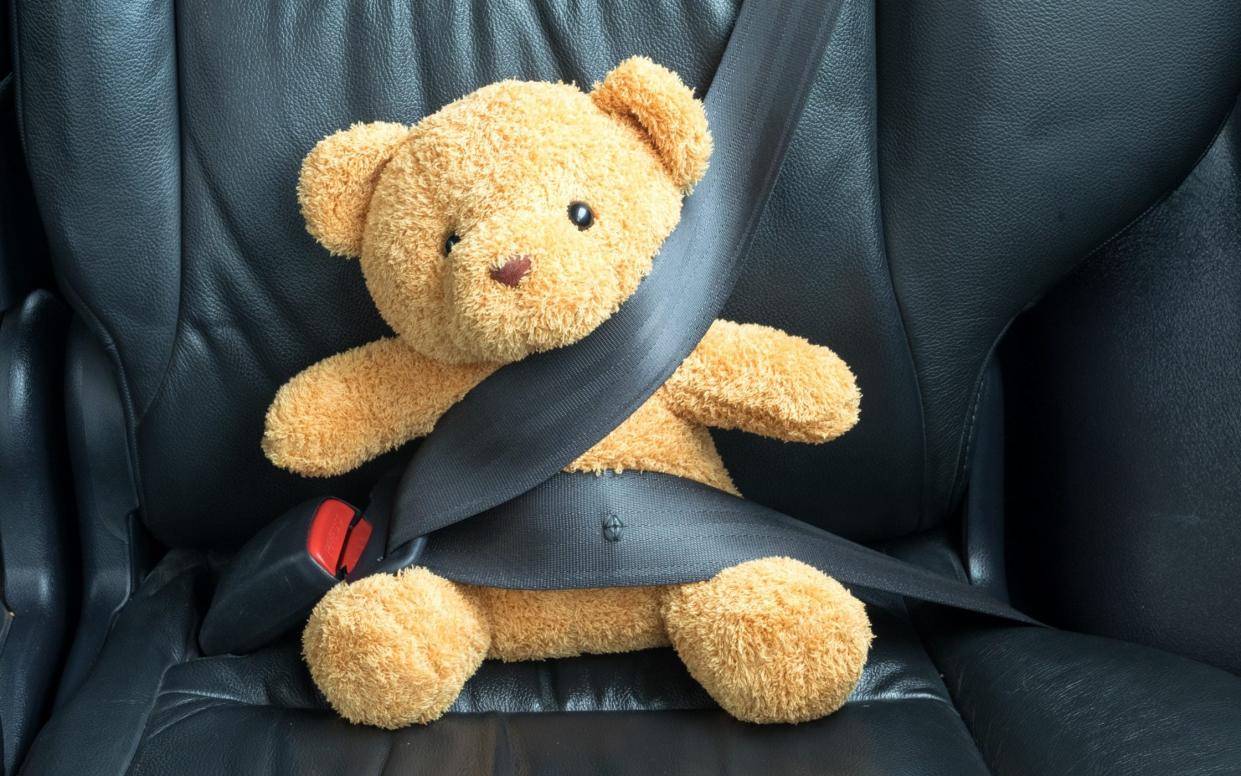40 years of mandatory seatbelts – and why some drivers saw the new rules as a threat to liberty

Forty years ago today, seatbelt wearing for drivers and front passengers became a legal requirement. On Monday, 31 January 1983, the BBC interviewed a cross-section of owners to see if they were aware of the £50 fine for non-compliance – with interesting results.
At that time, seatbelts had long been the subject of debate. The US marque Nash offered a short-lived lap-belt option in 1949, while Ford and Chrysler had a similar lack of success when such devices became accessories on their 1956 models. Two years later, Volvo’s design engineer Nils Bohlin devised the three-point seatbelt and the company made the patent freely available to all other car manufacturers.
By 1959, the British Safety Council saw a “pressing need for universal adoption of seatbelts in this country”, and its report quoted the Duke of Richmond and Gordon, the owner of the Goodwood racing circuit, after a crash on the A3: “On coming to rest in the offside ditch my wife and I both marvelled at our escape.” The Telegraph noted that while there seemed to be little interest in safety belts in this country, “some car makers are beginning to offer them as optional equipment”.
The following year, Jensen launched the 541S, the first British car with belts as standard equipment. By 1961, the British Motor Corporation, the UK’s largest automotive manufacturer, equipped all its cars with anchor points for a three-point harness. Their preferred supplier was Britax, with a lap and diagonal seatbelt (in the front only, remember) costing £5 5s.

It was Britax which initiated “Safety Belt Week” in April 1963, accompanied by a hard-fitting film entitled The Other Fellow, featuring speed record breaker Donald Campbell. A guest appearance from such an eminent driver helped to reassure viewers that donning a seatbelt was not a sign of weakness. This appeared to be a common belief in the early 1960s, while attitudes in the press varied widely. The January 1962 edition of Which? advocated their wearing, while Autocar wondered: “Why has the Minister for Transport been so long deciding to make the fitting of harnesses compulsory in new cars?”
By contrast, the editor of Motor Sport ranted in the February 1964 edition: “I do not use them in my car for the same reason that I do not take a parachute when I fly in a private or commercial aeroplane.” However, on 23 June 1966, The Telegraph reported, “from April 1 1967, certain vehicles will have to have front seat safety belt anchorage points”. The new regulations applied to cars and light vans.
On 31 July 1968, the retrospective installation of front seatbelts on cars registered between 1 January 1966 and 31 March 1967 became a legal requirement. The government began the “Wear a Seat Belt Always” campaign. At the same time, the Central Office of Information (COI) commissioned a succession of short Public Information Films, aka PIFs, to encourage regular belt-wearing.
One 1967 example of the genre had Geoffrey Keen urging motorists to “Snap into the seat belt habit” as wise Ford Zephyr owners followed his advice. Four years on, motorists were exhorted to “Clunk Click”. The PIF series is forever tainted with its association with Jimmy Savile, but Shaw Taylor of Police 5 fame initially presented them, asking startled Mini drivers why they had not belted up with the catchy Clunk Click Every Trip campaign.

As the 1970s progressed, the PIFs and print campaigns became increasingly graphic. 1978’s “Six really clever excuses for going through a car windscreen” had none of the cajoling tones of a decade earlier, with the line “just think how impressed the lads down the pub will be when you show them your scars”. In 1979 the COI released The Blunders series concerning a household of Austin 1100 Mk2-driving half-wits.
Yet there were concerns that such shocking films had a limited long-term effect. In 1973 the Automobile Association told the Government that seatbelt-wearing should be mandatory, while motoring-obsessed peer Lord Montagu of Beaulieu proposed a new clause in the Road Traffic Bill allowing the government to enforce seatbelt wearing. This move ultimately proved unsuccessful, and there were to be seven more proposals by 1980.
But in 1981, Lord Nugent, the president of the Royal Society for the Prevention of Accidents (RoSPA), successfully amended the Transport Bill to include safety belt legalisation. The subsequent Motor Vehicles (Wearing of Seat Belts) Regulations 1982 applied to the drivers and front seat passengers of cars registered from 1 January 1965 and light vans registered from 1 April 1967. The legislation also included three-wheelers bearing a J (1970/71) suffix.

Exemptions included milk float and postal delivery drivers, those “in the service of a fire brigade and is donning operations clothing or equipment”, and “a constable protecting or escorting another person”. In addition, motorists were responsible for front-seat passengers under the age of 14; rear belts were not required equipment in British-market cars until 1987.
The Department of Transport promoted a £680,000 publicity campaign, while belt manufacturers Britax and Kangol established chains of fitting centres. Some drivers regarded the new rules as a threat to their liberty, even going so far as to invest £4.99 in a “Just In Case” Emergency Seat Belt Cutter. Others considered them a logical step resulting from the growth of car ownership after the Second World War.
Possibly the most evocative illustration of the various attitudes to Belt-Up Day is the Peugeot 504, Mini and Hillman Hunter drivers in the BBC footage. Their reactions were variously resigned, rueful or even defiantly rueful – but they were all part of a seismic change in British motoring.

 Yahoo News
Yahoo News 
